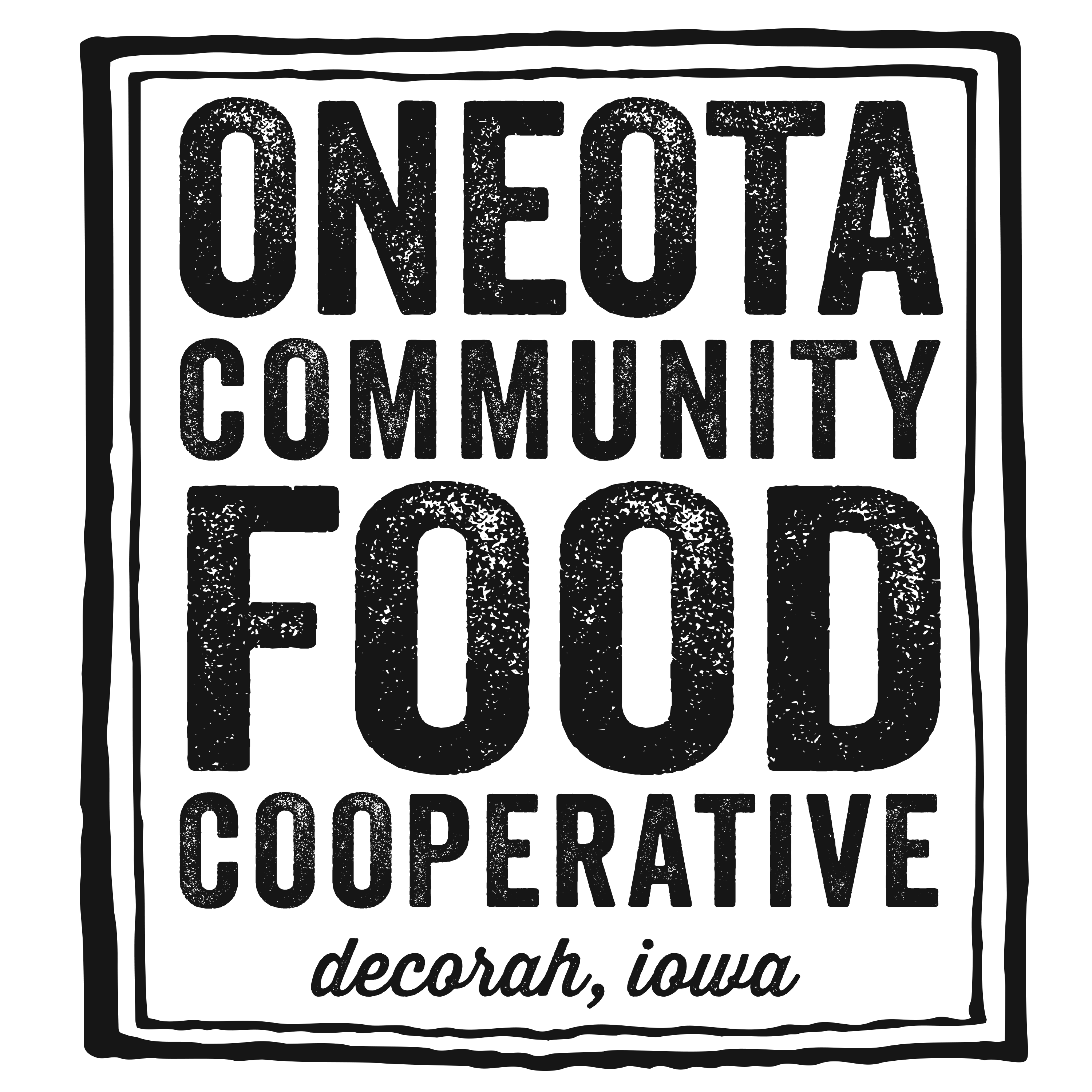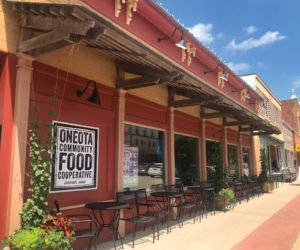By: Kristine Jepsen, Co-op Member/Owner
A few weeks ago, Kristin Evenrud, Co-op meat buyer, asked me to write about the evolution of Grass Run Farms from our beginnings at the Winneshiek Farmers’ Market nearly 10 years ago to our new partnership with meat powerhouse JBS.
First, we consider ourselves lucky to have been in the trenches of this grass-fed ‘trend’ long enough to have proven there is something to it. Feeding a beef animal forage throughout its life creates a demand in cattle production for grazing technique, non-grain forage production, and land management that includes water- and topsoil-sequestering pasture.
It’s not the path of least resistance, by far, but consumers, ourselves included, have asserted their preference for this alternative in their grocery marketplace. And now we have a chance to scale and fund it, bringing more producers into our network, and providing more food to a system that supports this diversity, this choice.
But let me offer a timeline for reference.
In 2006, Ryan and I moved home to Iowa from the Greater Yellowstone region, where I worked as a magazine editor and writer in Driggs, Idaho, and Ryan, a biology major at Luther, had attended the Montana State University farrier school and had been working full-time as a traveling horseshoer. We lived as caretakers on a series of rural properties, which combined with the horse community, gave us first-hand access to the seasonal cattle and sheep grazing systems on the surrounding state and federal land.
Naturally, we thought we could replicate this grazing – husbandry of animals on forages they’re built to digest – in our native Midwest. Local food was just finding traction in the marketplace, and we began reading the movement’s founding DIY resources, M.G. Kains’ Five Acres and Independence and Salatin’s You Can Farm, among them.
We bought a century-old farmhouse on seven acres near Dorchester, ran some temporary fence powered by a solar fencer and finished our first two steers. I use “finished” loosely because we really didn’t know what the meat should look or taste like. We just knew how we’d raised it, and we hoped customers had faith. Our first year at market, we sold roasts and ground beef from chest coolers.
In our next couple years, we started piecing together more pasture to rent for grazing. Already, we knew we couldn’t live on the 2% margin we were posting once we’d sold every last pound of ground beef. We were both working off-farm full-time and fencing and invoicing in the dark. We started a Meat CSA. I made a logo in Microsoft Paint. Around Mother’s Day 2007, we were herding calves down Balsam road along Bear Creek on foot, just two people narrowly turning an animal tide back into the pasture they’d broken from. Had they surged up the creek bed, we would have been there all day. I nearly stepped on a fawn nestled on the eastern bank of the road.
Slowly, we discovered we were running a business. Probably the most capital-intensive one we could have picked for two young-ish people with little equity and a business model that didn’t involve recognizable assets like tractors and land. We sold something perishable and never did get a bank to collateralize our inventory for operating capital, even when receipts got into five digits, then six, and eventually seven and eight.
We bought additional qualifying cattle from producers who wanted to raise grass-fed beef but didn’t want to transact with the public. We started packing pallets of orders from a walk-in cooler in our barn and delivering them to stores on our own 26’ “reefer” truck. A few times, I drove the 400-mile loop into Minnesota or into central Iowa with our infant daughter in her car seat next to me.
People started congratulating us, thrilled to see our little green logo in stores where their parents lived or their college roommate. What they didn’t realize is that our truck almost always ran in the red. We couldn’t afford to own land, animals and meat at the same time. We had only the resources to do what we did best: negotiate to get grass-fed into the marketplace and illustrate for consumers how it was a healthful, flavorful alternative.
Luckily, regional distribution companies took up our cause around the time we were feeling our do-it-all folly. Cattle producers who’d seen us survive our first years took a chance and started retaining ownership of the animals until harvest. We turned our attention to ensuring cattle were truly finished, consistently marbled and available year-round, and the region’s top steak houses started putting us on the menu. We made good hires. We operated within our cash flow for the first time.
Then, the unthinkable happened: the meat world took notice. By 2014, three of the four biggest beef companies in the country had announced domestic grass-fed programs. Now JBS, arguably the most nimble and progressive of them, started in 1953 by one farmer harvesting one oxen a day, wants our “clover cow” to represent this new chapter of the story.
Wait, what? That’s right. We were selected as the foundation of a broader grass-fed program with the kind of capital and staffing grass-fed has needed all along.
We – the Jepsens – are still suppliers of cattle for this program, and they’re from the same farms you’ve come to trust. Our network of hard-earned relationships and production knowledge makes this possible. Yet, even with the advantages of a deeper team, nothing is easy or assured. It’s turned our professional lives on end and created a new learning curve among new colleagues.
But, as you continue to see the Grass Run Farms label in the Co-op – unchanged – and we continue addressing things that matter – animal welfare, product accountability, reliable quality – we hope you’ll feel some amount of entitlement. You knew us first, and your support helped us prove an alternative against great odds.
Grass-fed isn’t a system that can be rubber-stamped across the landscape. In many ways, it cannot be commodified and will continue to be rooted in the knowledge and passion of real people choosing to do things a little differently.
As I created this draft in my Cloud of written work, I discovered an article I wrote four years ago this month for the Scoop. I’m humbled by how relevant it still reads:
Food is so many things – fuel, a connection to the earth, an environmental legacy. But local foods are also a business subject to the laws of economic success and failure that govern the rest of our lives, a fact that can get fuzzy in the scope of the ideals we want a local food system to embrace. …
“Local” is “sustainable” to the degree that it can truly feed communities, complete with farming, processing, storage and distribution that offer sincere alternatives to the system we seek to reinvent. …
It will always be up to the consumer to decide what “local” is worth in food value, as well as in social change.
Thanks for being the kind of community where a business like ours could fledge. We’ve enjoyed the journey and look forward to opportunities to come.
Kristine (and Ryan) Jepsen



